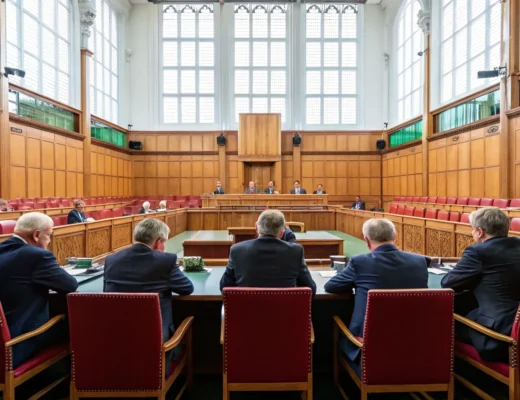The democratization of investing is a powerful concept that has been evolving for over four centuries, shaping the modern financial landscape. As we navigate through uncertain economic times, it is important to reflect on how the capital markets have historically served as a tool to convert confusion into prosperity. When the world’s first stock exchange opened in Amsterdam in 1602, it marked the beginning of investing as a more inclusive enterprise.
Previously reserved for wealthy merchants, the Amsterdam exchange allowed ordinary people—artisans, shopkeepers, silk weavers, soap makers, and even maids—to invest their savings. This democratization of investing spread to England, where the London Stock Exchange began in Jonathan’s Coffee House in “Change Alley,” attracting a diverse group of investors from various walks of life. Fast forward to today, the essence of investing remains largely unchanged.
It serves as a prosperity flywheel: people invest their savings, these funds are channeled into companies and industries, and any success flows back to investors, enabling them to afford retirement, education, and homeownership. Market participation has soared, with approximately 60% of American families now holding investments, compared to just 4% in the early 20th century. However, the benefits of market expansion have not been evenly distributed.
While globalization has lifted over a billion people from poverty, it has also exacerbated economic divides in wealthier nations. Protectionism has resurged as a response to capitalism’s perceived failures. Yet, the solution lies not in abandoning markets but in further democratizing them, enabling more people to own a meaningful stake in economic growth.
The democratization of investing
At BlackRock, we believe that expanding market access and participation is critical. Over the past year, our efforts have focused on unlocking private markets to a broader range of investors.
Historically, the capital necessary for major projects—whether 17th-century trading fleets or 21st-century data centers—was sourced from banks, corporations, and governments. Today, massive amounts of capital sit idle in banks and money market funds, untapped by the broader markets due to perceived risks and exclusivity. We are working to change this by innovating within the investment industry.
BlackRock has made significant strides by acquiring top firms in private markets, particularly infrastructure and private credit. This move aims to make private market investments more accessible and less risky for a broader range of investors. As we progress, the focus is clear: more investment and more investors.
By helping current investors access previously restricted parts of the market and enabling more people to become investors, we can continue the democratization that began in Amsterdam centuries ago. At BlackRock, our commitment to this vision underscores our belief that people can live better when they invest better. In conclusion, the democratization of investing is not just about expanding market access; it’s about fostering a more inclusive, resilient economy where a greater number of people share prosperity.
As we move forward, we must continue to innovate and expand access to ensure everyone has the opportunity to benefit from global economic growth.
Image Credits: Photo by Sortter; Unsplash







